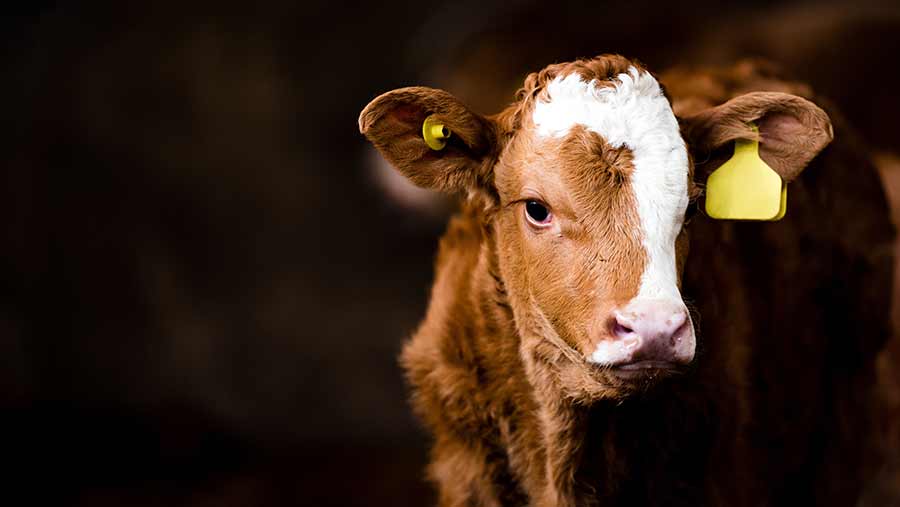First bovine coronavirus vaccine hits UK
 © James Bailey/Adobe Stock
© James Bailey/Adobe Stock Calf rearers and finishers now have another tool in the battle against respiratory disease in newborn calves, in addition to colostrum boosters.
An intranasal vaccine for bovine coronavirus (BCov) has hit the EU and UK market this autumn, claiming to improve control of several interlinked pathogens.
See also: How cow minerals unlocked calf health for Somerset farm
The live vaccine – Bovilis Nasalgena-C – is from MSD Animal Health and has been linked with keeping other respiratory pathogens, such as Pi-3, Mycobacterium bovis, bovine respiratory syncytial virus and Mannheimia haemolytica at bay.
While there is no claim for treating scours, the jab promises to reduce clinical signs of upper respiratory tract disease and nasal viral shedding from infection with BCov.
This is according to Dr Paul Burr of commercial laboratory Biobest, who said that BCov, as well as causing scours, can disturb the mucus lining of the thoracic tract. This can potentially “open the door” for other viral and bacterial pathogens.
He added that a survey of nasal swabs from 407 farmers between 2020 and 2022 found BCov on 39% of samples.
BCov vaccine: the numbers
- Bovilis Nasalgena-C can be used from day of birth onwards
- 2ml intranasal dose
- Protection from five days after administration
- Has a 12-week duration
Test first
Veterinary surgeon Leanne Forde-Archer, a practising vet in North Yorkshire, recommends that farms first assess what health challenges they have before buying vaccines.
“I would use diagnostic information to determine an appropriate vaccination programme on a farm,” she told Farmers Weekly. “Coronavirus PCR [polymerase chain reaction] testing is included in some respiratory packages, but not all.
“It must be remembered that to determine the presence of a pathogen, you must test for it.
“However, it must also be remembered that proof of pathogen is not always proof of disease. All information must be considered by the farm animal clinician to determine a vaccination programme.”
She suggests four focus areas for beef producers and calf rearers:
1. Management Other respiratory vaccines are available for use from birth. However, colostrum intake and navel preparation should be the priority on the first day of a calf’s life.
2. Farm history Vaccination protocols on farms should always be implemented based on farm history and diagnostic investigations. Not all vaccinations are appropriate or necessary on every farm. When dealing with pneumonia outbreak, take a thorough history of the system and course of the disease.
3. Post-mortem Post-mortem investigations play a vital role if there is dead stock on the farm, particularly if they are reasonably sudden deaths. Your vet can take samples of tissue for PCR and histological testing on farm. Cultures can also be useful if the animal is untreated, and it is a fresh carcass.
4. Pathogen identification If post-mortem examinations are not possible, pooled nasal swabs for PCR are a practical way to get a picture of which pathogens are implicated. Some laboratories will also provide information to quantify the level of pathogen.
